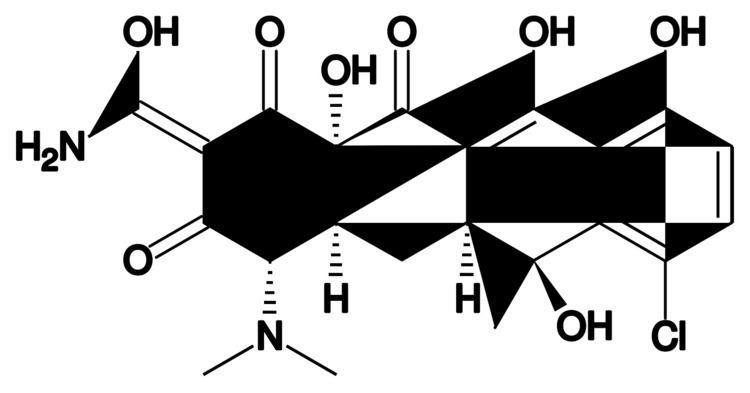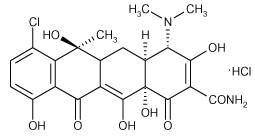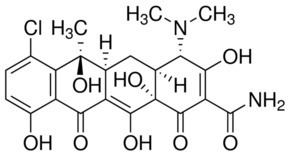Metabolism Molar mass 478.882 g/mol Bioavailability 30% | Protein binding 50 to 55% Biological half-life 5.6 to 9 hours CAS ID 57-62-5 | |
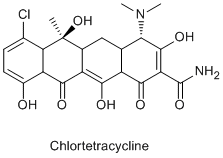 | ||
AHFS/Drugs.com Micromedex Detailed Consumer Information ATC code A01AB21 (WHO) D06AA02 (WHO) J01AA03 (WHO) S01AA02 (WHO) QG51AA08 (WHO) QJ51AA03 (WHO) | ||
Chlortetracycline (trade name Aureomycin, Lederle) is a tetracycline antibiotic, the first tetracycline to be identified. It was discovered in 1945 by Benjamin Minge Duggar working at Lederle Laboratories under the supervision of Yellapragada Subbarow. Duggar identified the antibiotic as the product of an actinomycete he cultured from a soil sample collected from Sanborn Field at the University of Missouri. The organism was named Streptomyces aureofaciens and the isolated drug, Aureomycin, because of their golden color.
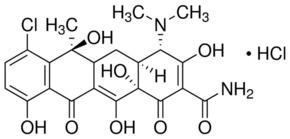
In veterinary medicine, chlortetracycline is commonly used to treat conjunctivitis in cats.
Chlortetracycline may increase the anticoagulant activities of acenocoumarol. The risk or severity of adverse effects can be increased when chlortetracycline is combined with acitretin, adapalene, or alitretinoin. Aluminum phosphate and aluminum hydroxide can cause decreases in the absorption of chlortetracycline resulting in a reduced serum concentration and potentially a decrease in efficacy. The therapeutic efficacy of mecillinam (amdinocillin), amoxicillin, and ampicillin can be decreased when used in combination with chlortetracycline. Chlortetracycline may increase the neuromuscular blocking activities of atracurium besilate.
